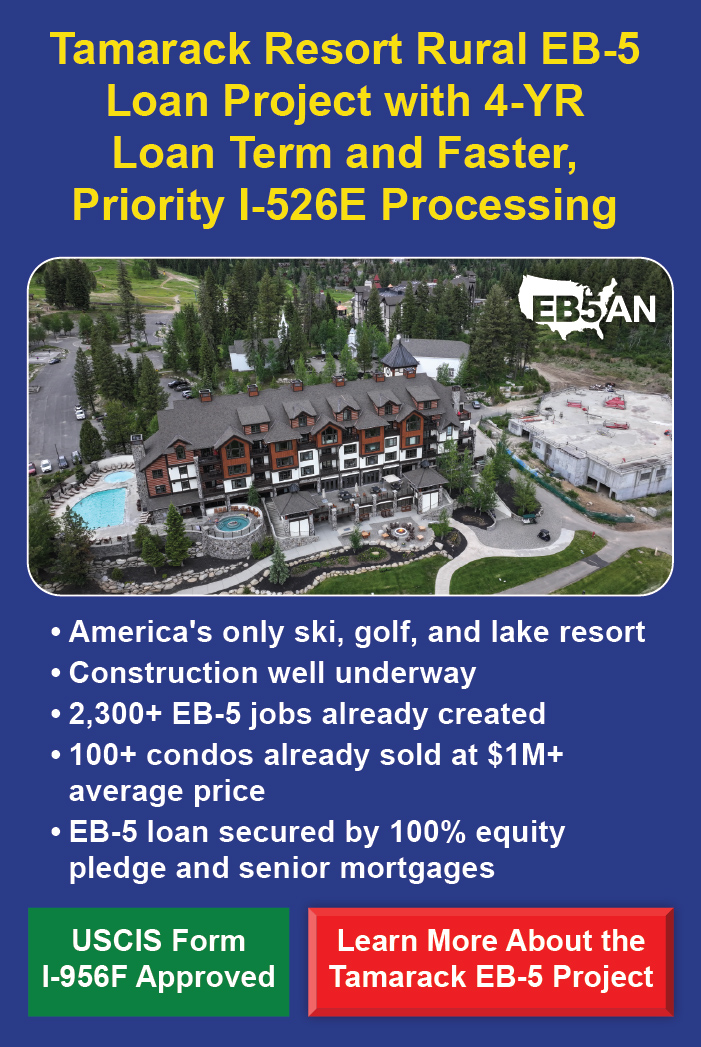
The EB-5 program offers foreign investors a path to U.S. permanent residency by funding projects that create jobs. The investment amount depends on the location of the project.
If it is in a targeted employment area (TEA), the minimum investment is $800,000 instead of $1,050,000.
This reduced minimum investment amount aims to attract funding to areas needing economic growth. TEAs fall into two categories: rural TEAs and high-unemployment or “urban” TEAs. Both options help investors meet EB-5 requirements while supporting the U.S. local economy.
Many EB-5 investors choose to invest through regional centers, which often place projects in a targeted employment area to help qualify for the lower investment amount and make it easier to meet job creation requirements.
Choosing the right TEA is important because it can affect visa processing times, investment outcomes, and long-term returns.
Understanding the differences between these locations can help investors align their financial goals with the benefits of the EB-5 program. This article explores how TEAs work, the benefits of rural and urban TEAs, and some of the best locations for EB-5 investments.
Understanding TEAs in the EB-5 Program
How to Choose an Investment Location
Locations to Be Wary of as an EB-5 Investor
EB5AN Can Help You Find the EB-5 Investment That Works Best for You
Understanding TEAs in the EB-5 Program
A targeted employment area (TEA) is a special designation within the EB-5 program that allows investors to qualify for a lower investment threshold, along with other benefits like set-aside visa quotas.
TEAs are classified as either rural areas or urban areas where the national average unemployment rate is high. The goal is to encourage investment and stimulate economic growth in certain regions.
Many EB-5 projects located in TEAs are developed by the regional center program, which is structured to manage larger-scale investments and help fulfill requirements like job creation.
For foreign investors, this can offer a more streamlined path to meeting EB-5 criteria while supporting growth in underdeveloped communities.
What Are Rural TEAs?
A rural targeted employment area is a location that is both outside a metropolitan statistical area (MSA), as defined by the U.S. Office of Management and Budget (OMB), and outside the boundaries of any city or town with a population of 20,000 or more, based on the most recent decennial census conducted by the U.S. Census Bureau.
The main benefits of investing in rural TEAs include:
- Faster EB-5 visa processing: Applications from rural TEA investors receive priority processing for their Form I-526E petition, which can shorten the wait time for visa approval.
- Reserved visas: Of the 10,000 EB-5 visas available each year, 20% are reserved for rural TEA investors.
- Lower risk of long backlogs: Rural TEAs are less likely to experience backlogs due to their larger set-aside visa allocations, and if a backlog does occur, it is expected to be less severe and shorter in duration compared to high-unemployment TEAs.
What Are Urban TEAs?
Urban TEAs are areas where the unemployment rate is about 150% of the national unemployment average. While they qualify for the lower EB-5 investment threshold, they receive fewer set-aside visas than rural TEAs and do not benefit from priority processing.
To qualify, these areas must meet strict standards based on official labor force data.
When multiple census tracts are combined to form a TEA, a weighted average unemployment rate (known as the labor force employment measure) is used to ensure the area truly reflects economic need.
However, high-unemployment urban TEAs still offer several advantages for EB-5 investors, including:
- Reserved visa allocation: The EB-5 Reform and Integrity Act of 2022 (RIA) reserves 10% of the total annual EB-5 visa supply for projects in high-unemployment urban areas (HUAs). This can potentially reduce wait times if you invest in these locations.
- Convenient locations: High-unemployment TEAs are often located in well-known urban areas, offering familiarity and convenience to EB-5 investors from low-demand countries where backlogs are not a concern. For these investors, the opportunity to invest in a larger city may outweigh the benefits of rural priority processing.
How to Choose an Investment Location

While EB-5 investors have the freedom to invest anywhere in the United States, the location of a project plays a crucial role in its long-term success. Even if a development appears promising, investing in an area with a stagnant economy or declining population may carry higher risks.
In recent years, states in the Western U.S., such as Colorado and Idaho, have experienced significant growth in residential real estate, driven by a steadily increasing population.
Unlike high-cost markets like California, these states offer more affordable land and development opportunities, attracting both homebuyers and investors.
A lower cost of living, strong economic fundamentals, and scenic landscapes have further fueled demand in these regions.
With population trends pointing upward, real estate investments in these states present promising growth potential. For EB-5 investors, this means lower financial risk and a greater likelihood of positive returns.
Developers in these areas also benefit from relatively low land costs, making EB-5 infrastructure projects more financially secure.
Similarly, the Southeastern U.S. has witnessed an influx of new residents, many of whom are relocating from more expensive metropolitan areas.
The rise of remote work has allowed professionals to leave high-cost states like New York in favor of more affordable alternatives such as Georgia and Florida. Known for their warm climate and vibrant cultural and recreational opportunities, these states have become prime destinations for those seeking a better quality of life.
Beyond being desirable places to live, many Southeastern cities are also major business centers that drive job creation and economic expansion.
With a solid real estate market and a strong economic foundation, EB-5 projects in this region have a high likelihood of successful completion.
Locations to Be Wary of as an EB-5 Investor
When considering investments through the EB-5 program, it is essential to be aware of certain locations that may pose higher risks. A significant area to approach with caution is the California Bay Area.
The California Bay Area is known for its vibrant economy, which includes technology, finance, and real estate. However, recent developments have raised concerns about California Bay Area’s suitability for potential EB-5 investors. The collapse of Silicon Valley Bank in March 2023 has further created uncertainty in the region’s financial landscape.
This bank failure has led to decreased access to financing for many infrastructure projects. As a result, EB-5 projects in the area may struggle to secure the necessary funding to move forward.
Additionally, high construction costs and expensive land prices can make commercial developments and regional center projects in the Bay Area less financially viable for EB-5 investors.
Urban TEAs in California also attract a high number of applicants, leading to longer visa backlogs that could delay investors’ immigration processes.
EB5AN Can Help You Find the EB-5 Investment That Works Best for You

Choosing the right location for an EB-5 investment is essential for maximizing both financial returns and immigration success. New investors can choose between rural and urban TEAs, each offering unique benefits and challenges.
By carefully assessing each option, you can select a project that aligns with the EB-5 program requirements and their financial goals.
Navigating the EB-5 investment process can be complex, but EB5AN is here to help. With over a decade of extensive experience in the EB-5 space, we have offered personalized guidance to help over 2,700 families across 70+ countries gain United States citizenship.
Book a free call with our professionals today to start your investment and accomplish your immigration goals.











